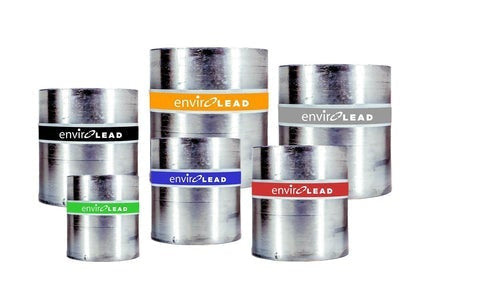The primary aim of roof flashing is to keep your roof watertight. Without this, rainwater would eventually penetrate the roof and cause big issues with damp, possibly even affecting the structural integrity of the house. Lead flashing is a critical element to your roof, and it is important to make sure it is installed correctly and in line with manufacturers guidelines.
Lead flashing has adorned roofs for centuries, for many different reasons. Lead sheeting is highly malleable meaning it be shaped to fit most angles, making it very easy to work with. Lead flashing offers incredible waterproofing properties and excellent longevity, it will often out last most buildings with minimal maintenance. Lead for roofing projects is still by far the most popular choice for any abutments or chimney flashings. Lead sheeting is also an environmentally friendly product, as they are fully recyclable.

Lead roll comes in a range of different widths, lengths, and thicknesses. Rolled lead comes in 3m and 6m rolls, with the widths ranging from 150mm to 2400mm. We also offer the lead as a cut to size option, meaning you only pay for what you need. Also giving you the chance to save time but not having to cut down the lead whilst on the job.
The table below shows what code (thickness) the rolled lead comes and its usual application.
|
Code |
Thickness in mm |
Weight in KG per m² |
Usual Applications |
|
Code 3 |
1.32 |
14.97 |
Soakers |
|
Code 4 |
1.80 |
20.41 |
Soakers, vertical cladding, flashing |
|
Code 5 |
2.24 |
25.40 |
Bay roofs, canopies, cladding, flashings, tapered valley gutters, pitched roofs, dormer windows |
|
Code 6 |
2.65 |
30.10 |
Parapet and tapered valley gutters, pitched and flat roofs, flashing, vertical cladding, canopies |
|
Code 7 |
3.15 |
35.72 |
Flat roofing, parapet and tapered valley gutters, pitched roofing, dormers, bay roofs, canopies |
|
Code 8 |
3.5 |
40.26 |
Flat roofing, bay roofs, canopies, parapet and tapered valley gutters, dormers |
There’s a whole host of lead dressing tools, accessories and fixings that might be needing when used rolled lead. Below is list of key tools and accessories and what they do.

Patination Oil - In damp conditions, untreated lead sheet will quickly generate a white carbonate layer, which rainfall will frequently transfer to neighbouring slates, tiles or brickwork, causing unsightly stains. This helps prevent run off staining and gives a pleasing finish to the leadwork.
Lead Flashing Clips – Securely holds the lead flashing into place to allow it to be dressed into place.
Lead Flashing Sealant – Used as a pointing material for lead brick and lead masonry joints. Traditional mortar is unable to expand whereas the flashing sealant offers a high degree of thermal expansion.
Lead Bossing Mallet – Used in bossing lead flashing with a bossing or bending stick to allow you to create corners.
Lead Bossing Stick – Used for bossing lead flashing to corners/curves.
Lead Dresser – Used for flattening out or shaping lead flashing prior to installation
There’s plenty more tools, and fixings available along with lead slates and expansions joints.
Don't forget we can deliver anywhere within the Mainland UK, with most products being available in 2-3 working days. Should you need any advise with lead flashing, please give our Customer Service team a call on 01752 466151.

